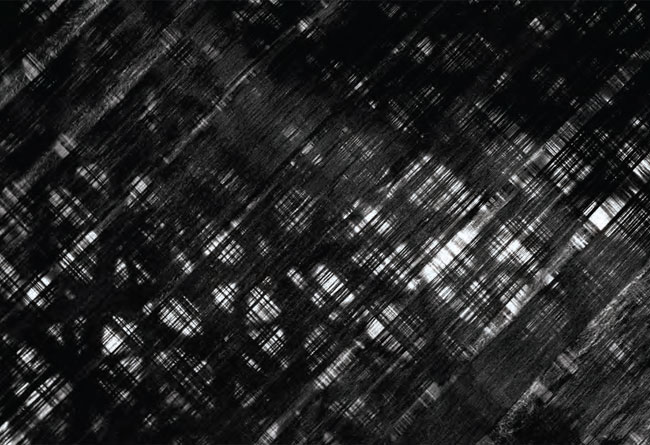

The story of the development of fibre-film sail material is one of steady development with the occasional bigger step up in product performance. Another such step may be just around the next corner...
Sailmaking has evolved in some interesting directions in recent years, with many variations of film-fibre laminates and fibre-only constructs. All have promised to deliver improved performance by lighter weight, better durability and greater resistance to distortion in the desired mould shape of the sail.
At Elvstrøm Sails, the path chosen is one of continued refinement of the film-fibre laminate, building on the original vision of Peter Conrad to match the fibres with the load paths in the sail. Elvstrøm Sails’ EPEX product line was introduced in 2008 to take this concept even further with continuous unbroken fibre layouts and advanced vacuum infusion technology in the film-fibre assembly process to eliminate any air pockets that can lead to delamination. That system is so advanced now that EPEX sails are guaranteed against failure by delamination for three years of use, which is much longer than the competitive life of most racing sails.
Even with this success, Elvstrøm Sails is not at rest and has a new development concept that can deliver even greater performance while using the proven EPEX process. A few test sails have been built and tested over the past year with very encouraging results, so Elvstrøm Sails feels ready to reveal this latest approach to a marketplace hungry for the latest in high-performance sails.
That idea is this: yarn tows of carbon used in the assembly of an EPEX sail come in twisted fibre bundles, and these will always be prone to having an initial stretch even when bonded within a laminate…think of hysteresis in cordage where there is an initial elongation as the twisted fibres start to align under load. To counteract this problem Elvstrøm Sails developed an untwisting step prior to lamination to better align the fibres in the tows.
Below: Elvstrømʼs Jesper Bank says sails can now be made up to 25 per cent lighter as a result

Yet it turns out that even with this step, the problem is not completely solved because when the yarns are laid out in the characteristic pattern of centenary curves on the membrane there can be differential loading of the outer fibres relative to the inner fibres within the yarns when the sail is curved in its flying shape. The outside fibres on each side of the membrane will take the load on each tack, which is not optimising the full potential strength in the material of the yarn (usually carbon), so there is a lower limit in the amount needed to handle the loads without distortion.
‘This has been a little frustrating for us,’ says Jesper Bank, commercial director of Elvstrøm Sails, ‘because we knew we had a good load-bearing structure with the yarn alignments. We wanted to preserve the continuous yarns taking the loads from each corner to the other corners of the sail and the laminates are really tough and durable. Yet we found a limit to how small the yarns could get to accommodate the loads due to this geometric effect.’
The solution was to manipulate the geometry of the fibres: rather than bundling them into yarns exclusively, they are combined with wide, flat, unidirectional fibre tapes so the loads in the sail are shared. This allows the yarn size to be reduced to minimise the differential loading. And due to the vacuum pressure used in the EPEX lamination process the membrane can be made even thinner and lighter without compromising on strength.
In essence, this new membrane type combines the best lightweight qualities of a thin, no-film unidirectional fibre tape approach with the best strength qualities of the continuous load path laminate approach where shape control is achieved by adjusting the catenary curves and ensuring a more efficient match of the fibre density exactly where it’s needed in the sail. The film thickness in this development is exceedingly small – only 0.25 mm – so film weight is negligible while it still provides an important substrate to bond the yarns and tapes.
‘Our testing on a few different big boats throughout last season has been really encouraging,’ says Bank. ‘These sails can be up to 25 per cent lighter than conventional EPEX, which would be attractive to the racing crowd. Yet our target market is actually the performance cruisers where headsails are rarely taken down but remain furled.
‘And with one or two furling headsails only, they have to be strong enough and durable enough to withstand all conditions, and by being lightweight as well, this improves sail shape performance in light conditions and also boosts the stability of the boat because the sail weight aloft in the rig is lighter.’
Click here for more information on Elvstrom Sails »
We invite you to read on and find out for yourself why Seahorse is the most highly-rated source in the world for anyone who is serious about their racing.
To read on simply SIGN up NOW
Take advantage of our very best subscription offer or order a single copy of this issue of Seahorse.
Online at:
www.seahorse.co.uk/shop and use the code TECH20
Or for iPad simply download the Seahorse App at the iTunes store


